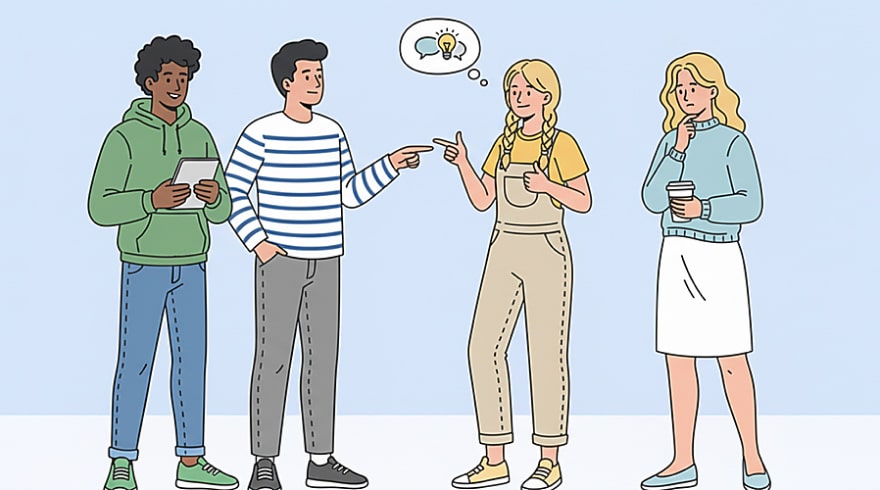Discover Your Communication Style: A Comprehensive Guide

Why Understanding Interaction Styles Changes Everything
Conversations shape careers, relationships, and community trust, yet most people navigate them without a map. When you uncover your recurring patterns, you gain a language for behaviors that previously felt vague or situational. The result is calmer problem-solving, clearer collaboration, and a practical path toward influence that doesn’t require you to mimic someone else’s personality.
Many readers begin with the communication style quiz as a friendly doorway into self-awareness, because it translates complex behavioral science into approachable insights. Beyond one-off novelty, a rigorous instrument turns daily interactions into data you can examine and refine. You start noticing triggers, strengths under pressure, and blind spots that show up repeatedly in meetings, emails, and feedback discussions. New learners often ask, what is your communication style quiz?
Another starting point is the communication styles quiz because it compares patterns across contexts, highlighting how your default approach shifts when stakes rise or teams change. That contrast provides a more honest portrayal of how you actually communicate, rather than how you hope to communicate. The result is an evidence-based plan to recalibrate tone, timing, and structure without losing authenticity.
- Reframe conflict as a compatibility puzzle rather than a personal failure.
- Detect subtle habits in listening, questioning, and summarizing.
- Build a shared vocabulary so teams can coach without criticism.
- Track growth with repeatable checkpoints over weeks and months.
How the Assessment Works and What You Gain
High-quality questionnaires blend behavioral prompts, situational judgment items, and consistency checks to prevent guessable outcomes. You’ll typically rate reactions to realistic scenarios, which allows algorithms to spot patterns across tone, pacing, assertiveness, and empathy. The best systems also surface probabilities rather than absolutes, so your results feel nuanced rather than boxed-in.
For a broad snapshot of interpersonal habits, learners often start with a communication quiz that focuses on clarity, listening, and message structure. That baseline clarifies where you already excel and what frustrates collaborators. With clean feedback loops, you can convert insights into micro-experiments like adjusting meeting prep or altering question types during discovery calls.
Teams seeking measurable behavior change sometimes add an effective communication quiz to validate progress after training cycles. Post-assessment comparisons illuminate which tactics stick under pressure and which still need coaching. Over time, those comparisons reduce friction, shorten decision cycles, and raise accountability across departments.
- Adaptive scoring distinguishes momentary choices from stable patterns.
- Benchmarks by role or industry provide relevant comparison points.
- Action tips translate findings into scripts, prompts, and rituals.
- Follow-up pulses validate improvement with minimal time burden.
Decoding Core Styles and Signals
Across research traditions, four recurring tendencies appear: directness, analytical depth, relational sensitivity, and expressive energy. No single pattern is “best,” because effectiveness depends on context, audience, and stakes. Skilled communicators dynamically blend these tendencies, but most of us lean on one or two favorites, especially under stress or time pressure.
Many people explore the well-known framework through the 4 styles of communication quiz to see how those tendencies play together in daily conversations. When you translate those tendencies into observable signals such as pacing, question types, or preference for data versus stories you gain options rather than prescriptions. With options in hand, you can flex deliberately without feeling scripted.
| Style | Typical strengths | Watch-outs | Best environments |
|---|---|---|---|
| Direct | Decisive calls, crisp priorities | May rush context or overrule quieter voices | Time-sensitive decisions, crisis response |
| Analytical | Depth, accuracy, structured reasoning | Risk of analysis paralysis or distant tone | Complex planning, compliance, quality reviews |
| Relational | Trust building, empathy, alignment | May avoid tough calls or delay feedback | Cross-functional collaboration, onboarding |
| Expressive | Vision, enthusiasm, storytelling | Can overtalk or drift from details | Innovation sprints, town halls, sales demos |
When you want a broader taxonomy that includes nuance beyond the big four, some evaluators recommend a communication type quiz to illuminate sub-patterns like conflict stance, feedback tone, or decision style. Those micro-patterns matter because they surface friction points that can derail otherwise solid relationships. With that visibility, you can preempt misunderstandings before they harden into narratives.
- Map signals you display under time pressure versus open-ended collaboration.
- Identify audience cues that suggest you should pivot style midstream.
- Create meeting “charters” that protect psychological safety and clarity.
Use Cases in Education and the Workplace
Student cohorts benefit when communication becomes teachable rather than a mysterious soft skill. Orientation programs, advising sessions, and project teams all run smoother when learners can name and adjust their tendencies. Faculty also gain a shared framework for feedback that focuses on observable behaviors rather than personality judgments.
Campus success centers frequently integrate a communication style quiz for students into peer mentoring so first-year learners build confidence in study groups. As classmates discover each other’s preferences, they align on norms for debates, presentations, and lab coordination. That clarity limits misfires that often masquerade as conflict when they are simply style mismatches.
In corporate settings, managers reduce rework and meeting fatigue when team rituals reflect behavioral diversity. Onboarding journeys, leadership programs, and client-facing roles all benefit from repeatable diagnostics tied to concrete practice. With shared language and rules of engagement, tough conversations become more productive and less personal.
Facilitators sometimes label lightweight activities as quiz communication to differentiate warm-ups from full assessments in workshops. Those quick pulses keep energy high while still generating reflection points. Paired with structured debriefs, even short exercises can unlock better listening and more targeted coaching.
- Education: normalize feedback, improve group project cohesion.
- Sales: adapt pitches to analytical or story-driven buyers.
- Engineering: shorten handoff loops with precise requests.
- Healthcare: align bedside manner with patient needs and stress levels.
From Results to Action and Tools to Try
Insights only matter if they change next week’s calendar, so prioritize small experiments. You might rewrite meeting agendas with owner, purpose, and timebox; you might switch from advice to questions during discovery; you might decide which topics deserve asynchronous memos instead of real-time debates. Treat each experiment like a hypothesis, then evaluate outcomes with the same rigor you’d apply to product or process changes.
Budget-conscious learners often begin with a communication style quiz free to validate whether the framework resonates before investing in premium diagnostics. If the lens feels useful, you can graduate to deeper tools with scenario branching, benchmarking, and longitudinal tracking. That staircase approach maximizes adoption while minimizing upfront cost.
When tailoring your development plan, coaches recommend revisiting your communication style quiz results after major milestones to capture growth. New responsibilities and audiences can shift how strengths show up, so a fresh snapshot keeps your playbook relevant. By building a recurring cadence, you transform insight into a sustainable performance system.
- Translate findings into prompts you keep on meeting notes.
- Pair style practice with a measurable outcome you care about.
- Schedule quarterly refresh assessments to calibrate progress.
FAQ: Quick Answers to Common Questions
How accurate are these assessments?
Well-designed instruments are reliable at the pattern level, especially when they use scenario-based items and consistency checks. You’ll still want to treat outcomes as guidance rather than destiny, because context can nudge behaviors in surprising ways. Over time, repeating a snapshot after coaching or role changes will sharpen precision and confidence.
Which framework should I choose first?
Pick a model with clear behaviors you can observe and practice, not just labels. If your team needs rapid decisions, prioritize tools that emphasize action cues and meeting rituals. For deeper analysis, choose a system with scenario libraries, coaching tips, and role-specific examples that make translation into daily work effortless.
What’s the difference between quick quizzes and full diagnostics?
Short instruments give you a fast mirror, while comprehensive options reveal context shifts, edge cases, and stress responses. As a practical path, try a brief tool to gauge fit and then graduate to a richer option if the insights feel actionable. Many learners appreciate this low-friction on-ramp before committing time or budget.
Can these tools help with job interviews and presentations?
Absolutely, because the same cues that improve teamwork also sharpen storytelling and stakeholder alignment. Candidates often use their results to script examples that illustrate adaptability and empathy. Hiring panels can likewise assess fit by mapping role demands against the behaviors a candidate naturally displays.
Where do I find training that pairs with assessments?
Look for programs that integrate micro-practice, feedback loops, and role-play simulations so you can turn insights into habits. Many platforms categorize modules under quiz communication skills to signal that lessons connect directly to measurable outcomes. With tight integration between testing and practice, you get a closed loop that accelerates progress.
Latest News



